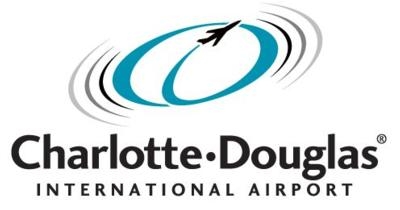Will Also House Radar Approach Control For The Airport
U.S. Transportation Secretary Anthony Foxx and FAA Deputy Administrator Michael G. Whitaker attended a groundbreaking ceremony late last week for a new 370-foot-tall air traffic control tower and radar approach control at Charlotte Douglas International Airport (CLT). The new tower will enable air traffic controllers to continue to provide the safest, most efficient service to flights at the nation’s fifth busiest tower.

“This investment in our aviation infrastructure will position us to handle the future growth that we forecast for Charlotte,” said Secretary Foxx. “This new air traffic control facility will help us serve travelers at one of our busiest airline hubs for decades to come.”
“The FAA is committed to modernizing our air traffic control system,” said Deputy Administrator Whitaker, who also is the FAA’s Chief NextGen Officer. “Investing in NextGen will make air travel more efficient, dependable, and even safer.”
The new air traffic control tower will be equipped with state-of-the-art Next Generation Air Transportation System, or NextGen, technology including Standard Terminal Automation Replacement System (STARS), Data Communications, Automatic Dependent Surveillance-Broadcast (ADS-B), and Advanced Electronic Flight Strip System (AEFS). Charlotte also is the test site for Airspace Technology Demonstration (ATD-2).
The 850-square-foot tower cab has enough room to accommodate additional future air traffic control positions. The 42,000-square-foot base building will house an expanded terminal radar approach control (TRACON), with space for future growth. Training rooms, administrative offices, and a power distribution supply system will also be in the base building, along with the latest aviation security and air traffic simulation capabilities.
In addition, the new 370-foot-tall tower at CLT will provide air traffic controllers with a bird’s-eye view of the airfield, and will accommodate current operations and future growth. The new Charlotte tower will be the second tallest tower in the National Airspace System after the 398-foot-tall tower at Hartsfield-Jackson Atlanta International Airport. The existing tower was commissioned in 1979. The facility’s operational growth, new air traffic control technology, and the airport’s addition of new runways and taxiways made the height and size of the old tower obsolete.
Charlotte Tower controllers handled about 225,000 takeoffs and landings from January 1 to May 31, 2016, making it the fifth busiest tower in the country. In 2015, CLT was the sixth busiest tower, when controllers handled 544,000 takeoffs and landings. TRACON controllers handled 572,330 instrument operations (overflights) in 2015, making it the 13th busiest radar approach control. Traffic at CLT is forecast to grow to 748,000 by 2040.
CLT also handles significant quantities of air cargo and was recently included in the Department’s designation of the Interim National Multimodal Freight Network as one of the top airports for freight movement in the country.
A total of 179 FAA employees work at Charlotte Tower and TRACON – 136 in Air Traffic and 43 in Technical Operations. Technical Operations employees install and maintain air traffic control equipment.
The FAA awarded a $60 million contract to build the new facility in January 2016 to Archer Western Construction. Equipment, installation and training costs, and demolition of the old tower bring the total project cost to $112 million. Construction of the tower and TRACON base building is expected to be complete in 2018, and the facility will be fully operational in 2020.
(Source: FAA news release)
 NTSB Final Report: Rutan Long-EZ
NTSB Final Report: Rutan Long-EZ ANN FAQ: Turn On Post Notifications
ANN FAQ: Turn On Post Notifications Classic Aero-TV: ICAS Perspectives - Advice for New Air Show Performers
Classic Aero-TV: ICAS Perspectives - Advice for New Air Show Performers ANN's Daily Aero-Linx (06.28.25)
ANN's Daily Aero-Linx (06.28.25) Aero-News: Quote of the Day (06.28.25)
Aero-News: Quote of the Day (06.28.25)



